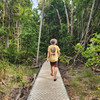Cambridge Common
OasisRelaxationByThompson
Harvard University Art Museum🪟
Noah MacGregor
A nice afternoon punting in Cambridge
Joe the world citizen
let's go to Harvard Square
InternationalJetsetter#99
Harvard University
JackMaguire26
Boston 2-day 1-night, introduction to off-the-beaten-path routes
Sh@d0wh3@rt_D@rkn3ss3r
Popular Trip Moments
【Harvard Yard - Oasis of Knowledge, Brilliant Chapter of Cultural Journey】 | I really love the rural scenery overseas, the beautiful countryside of Massachusetts! | Cambridge Common | Harvard University Art Museum🪟 | Opening the window is Harvard University?! | Sheraton Commander Hotel | A nice afternoon punting in Cambridge | Must Try Lobster Sandwich | Love The Cappuccino! Food great too! | let's go to Harvard Square | Flying in the sky, running on the ground! Seen and unseen! Haval Nature Museum has it all? | Boston's must-visit spot for taking photos! Harvard Museum of Natural History! A place worth seeing 🌻. | World-renowned university "Massachusetts Institute of Technology", a must-visit in Boston! | Harvard University | Boston 2-day 1-night, introduction to off-the-beaten-path routes | Best Museum in the Heart of Boston | Walk with me to Harvard University | Wow MIT Wow | พาทัวร์ MIT 📚 | พาทัวร์ Harvard University | Residence Inn by Marriott Boston Cambridge | US Trip | Breakfast is a must, BRUNCH is a culture 🍳☕️
Popular Travel Types
Popular Destinations
Lamezia Terme Travel | Huzhou Travel | Greater Accra Travel | Kuala Terengganu Travel | Zamboanga del Norte Travel | Desah Travel | Subic Bay Travel | Shinkiari Travel | Nanchang Travel | Surigao Travel | Sapporo Travel | Phu Quoc Island Travel | India Travel | Cagayan De Oro Travel | Tenterfield Travel | Viganella Travel | Cabadbaran City Travel | Cebu Travel | Murree Travel | Newton and Noss Travel | Huta-Studenets'ka Travel | Yang Tha Chang Travel | Itutinga Travel | Bhusni Travel | TT. Neo Travel | Mereti Travel | Alfredo Marcondes Travel | Sturt Vale Travel | Grafschaft Travel
Recommended Attractions at Popular Destinations
Bangkok attraction near me | Tokyo attraction near me | Manila attraction near me | Hong Kong attraction near me | Taipei attraction near me | Seoul attraction near me | Los Angeles attraction near me | New York attraction near me | Shanghai attraction near me | Kuala Lumpur attraction near me | Shenzhen attraction near me | Osaka attraction near me | Singapore attraction near me | Guangzhou attraction near me | London attraction near me | San Francisco attraction near me | Beijing attraction near me | Macau attraction near me | Bali attraction near me | Paris attraction near me | Ho Chi Minh City attraction near me | Orlando attraction near me | Jakarta attraction near me | Chicago attraction near me | Phuket attraction near me | Toronto attraction near me | Istanbul attraction near me | Dallas attraction near me | Cebu attraction near me | Seattle attraction near me
Popular Attractions
Sunway Lagoon Theme Park | Shanghai Museum | Jiajing Island | Gankeng Hakka Town | Ngong Ping 360 | Beijing Wildlife Park | Grandview Mall | Tianmen Mountain | Nanxun Ancient Town | Universal Orlando Resort | Underwater World Pattaya | Park Güell | Angkor Wat | Top of Shanghai Observatory | Hongyadong Commercial Street | Yuexiu Park | Zaanse Schans | Hangzhou Changqiao Polar Ocean Park | Zhangjiajie Grand Canyon Glass Bridge | Snow Park | La Playa Xpu-ha Beach Club | We Ramblers | La Ferme du Pont des Loups | National Armed Forces Sports Base Swimming Pool | Soosovsko-Geczyovsky barokovy kastiel | Hengshan Bridge | Watermen's Museum | Pollards Bay | Yuanjiao Temple | Daisen Pension Village
Popular Restaurants in Cambridge
Mex Taqueria & Bar | Urban Hearth | The Table At Season To Taste | Russell House Tavern | Legal Sea Foods | Giulia | Toscanini's Ice Cream & Coffee | Oleana Restaurant | Craigie On Main | Alden & Harlow | Zephyr On The Charles | Yume Wo Katare | Batifol | Catalyst Restaurant | Glass House | Mr. Bartley's Burger Cottage | La Fabrica Central | Cafe ArtScience | Daedalus | Basta Pasta | Alive & Kicking Lobsters | The Maharaja | Harvest | Asmara Restaurant | Grafton Street | Henrietta's Table | Black Sheep Cafe | EVOO | Gran Gusto | Mamaleh's Delicatessen Cambridge
Payment Methods
Our Partners
Copyright © 2024 Trip.com Travel Singapore Pte. Ltd. All rights reserved
Site Operator: Trip.com Travel Singapore Pte. Ltd.
Site Operator: Trip.com Travel Singapore Pte. Ltd.































